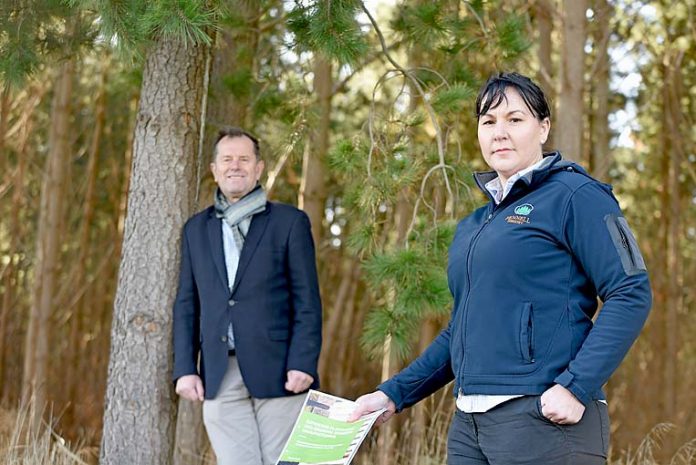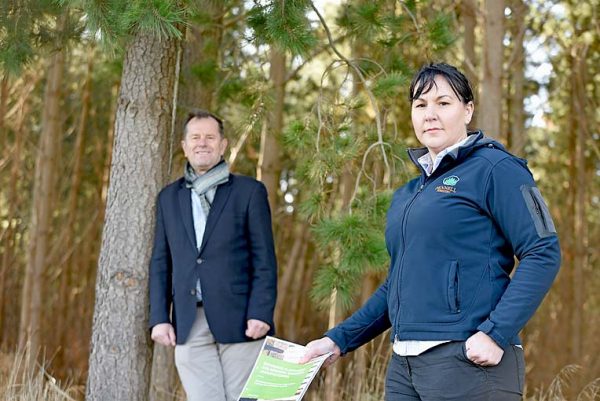

THE region’s forestry sector is calling for greater support from the State Government to drive growth, greater efficiencies and reform across the industry.
Sixteen recommendations have been handed down in report from The Forest Industry Advisory Council of South Australia to supercharge the growth of the Green Triangle industry.
Primary Industries and Regional Development Minister Tim Whetstone yesterday met with the council’s chair Wendy Fennell in Mount Gambier to canvass details of the strategic report.
The forestry sector – which underpins thousands of jobs – is calling for measures relating to industry promotion, water usage and licensing, cross-border arrangements, fire management, biosecurity, infrastructure and transport as well as research and training.
In an in-depth interview with The Border Watch, Mr Whetstone said the State Government would now consider the report.
“This is an all of industry contribution to me as to what industry is looking for in the future as well as the governance issues within the sector,” Mr Whetstone said.
He said the report advocated for a greater partnership with the Victorian Government on cross-border issues.
“South Australia’s forest industry is an important economic driver for the state – this is particularly so in the Green Triangle region, one of Australia’s premier softwood timber producing regions,” Mr Whetstone said.
He said the government recognised the timber industry’s importance which was why it established the council in December 2018.
“We delivered on an election commitment to the forest industries and their communities to strengthen our communication lines so that we could all work towards common objectives,” the minister said.
“Representing the full value chain of the industry from forest owners, forest managers, harvest and haulage, small timber manufacturers, large timber manufacturers, timber biomass to farm forestry, the advice received from the council is a collaborative insight into their vision for the sector.”
Mr Whetstone said the report was an important step towards achieving the industry target of doubling the economic value of our forest manufacturing industry by 2050.
“Given the unprecedented events this year, I believe this feedback is also timely as the sector and the regional communities that support it start look to recover from last summer’s devastating bushfires and the effects of COVID-19 on markets,” he said.
“There is already proactive work that is under way benefiting the industry, particularly in regards to in transport and heavy vehicle reform and this latest advice helps us to build upon what has been achieved so far.
“I am now considering the recommendations and advice and I am committed to delivering outcomes for the forest industry.”
Meanwhile, Ms Fennell said one of the pressing issues in the report was the differing cross-border transport regulations.
“In South Australia you can have 85 tonne on (a heavy transport vehicle), but when you cross into Victoria you have to drop that down,” Ms Fennell said.
“We need to see these regulations streamlined. There are also differences in water regulations.
“Another big issue is fighting fires and the management and training that is needed.”
The industry leader said these issues needed to be brought to the table with the Victorian Government to drive efficiencies and growth.





